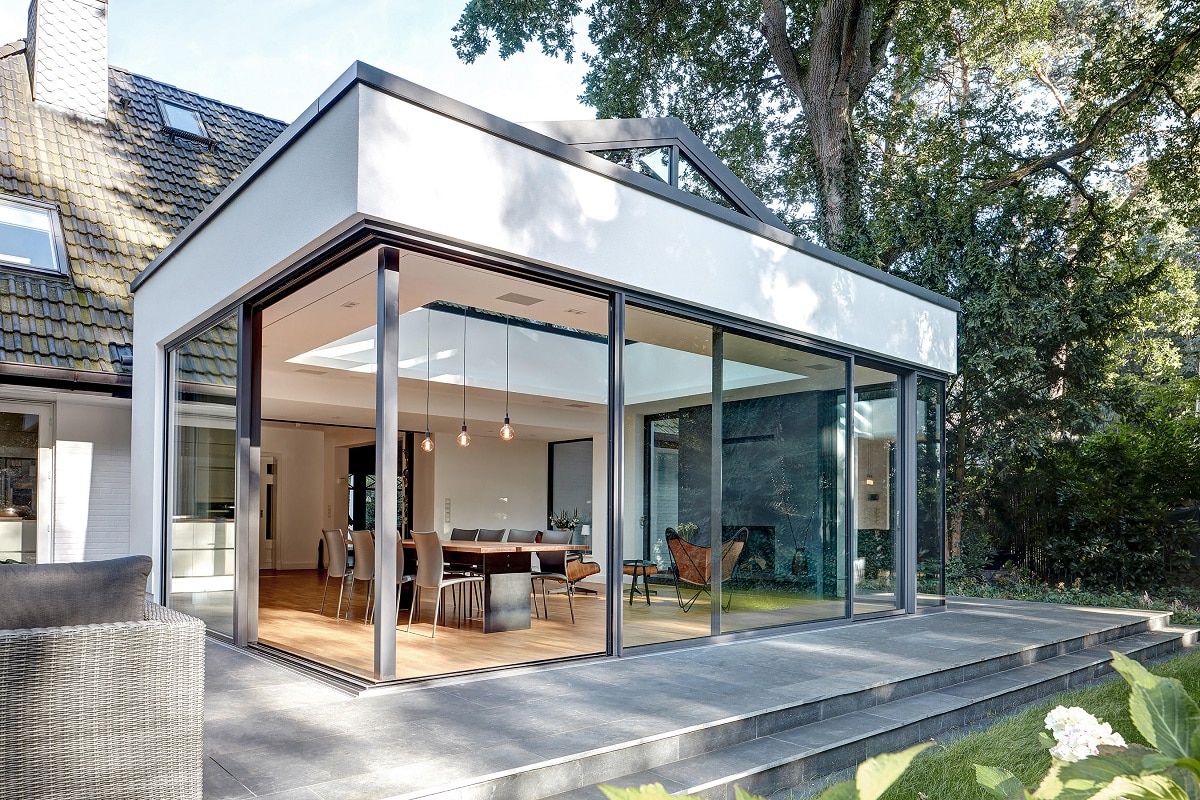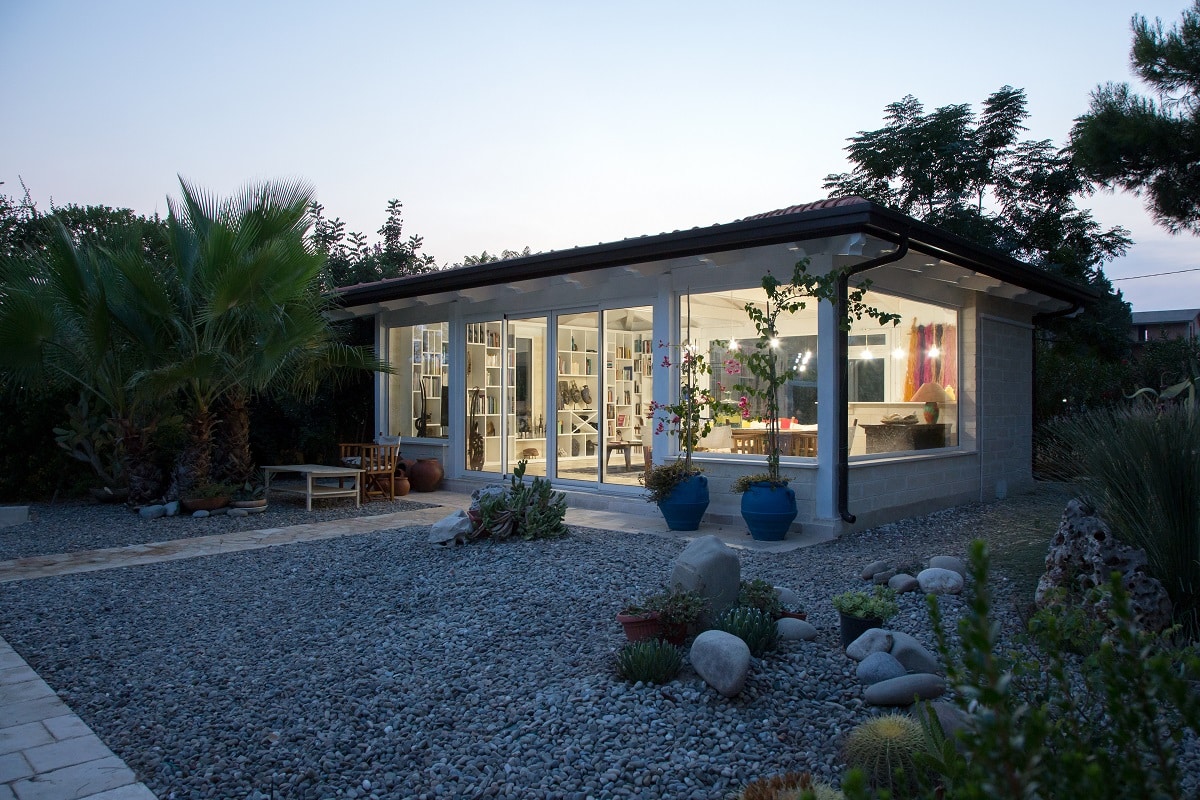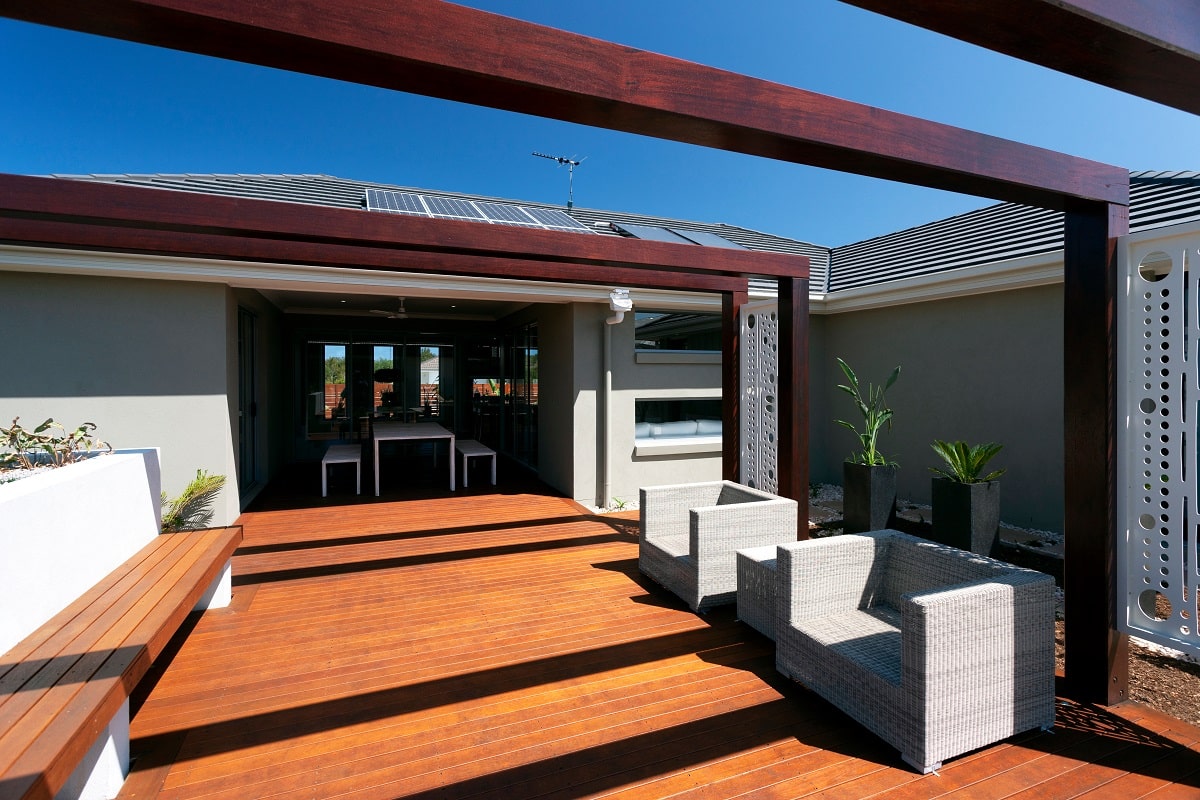Looking to add a little extra space and style to your home? Consider a glass veranda structure! In this article, we’ll cover everything you need to know about glass verandas, from the benefits to the cost to the different types available. We’ll also give some tips on how to care for your new glass veranda design so that it stays looking its best. So whether you’re planning on entertaining guests or just want a little more light and air in your life, read on to learn everything you need to know about glass verandas.

Introduction to Glass Veranda Arrangements
A glass veranda is a type of porch or patio enclosure made with glass panels. They are a popular choice for homeowners who want to enjoy their outdoor space without being exposed to the elements.
There are many different styles of glass verandas to choose from, so you can find one that fits your home’s architecture and your personal preferences.
Glass verandas can be freestanding or attached to your home. They can be used as a sunroom, a place to entertain guests, or simply an outdoor extension of your living room.
Glass verandas are a popular choice for homeowners because they are relatively easy to install and maintain.
Dimensions of a Glass Veranda Structure
When it comes to the dimensions of a glass veranda, there are a few things to keep in mind. First, the width of the structure will be determined by the number of glass panels used. Most glass veranda constructions are between six and eight feet wide, but some can be as wide as 10 feet. The length of the veranda will be determined by the size of the patio or deck that it will be attached to. Glass verandas can be as long as 20 feet, but most are between 10 and 15 feet in length.
The height of a glass veranda is typically between seven and eight feet, but this can vary depending on the style of the veranda and the height of the home’s eaves. The pitch of the roof is also something to consider when it comes to dimensions. A glass veranda design with a steeper pitch will allow for more headroom inside, while a shallower pitch will provide more protection from the sun and rain.
Glass Verandas
Headroom Requirements in a Glass Veranda Structure
Before you install a glass veranda, it is important to make sure that you have enough headroom to avoid any accidents.
The minimum headroom requirement for a glass veranda construction is 2.1m, which is the same as the minimum requirement for a standard single-story dwelling. However, if you are planning on using it for entertainment or dining, then you will need to increase the headroom to 3m. This will ensure that there is enough space for people to move around the space without bumping their heads.
If you are unsure about the headroom requirements for your glass veranda, then it is best to consult with a professional before proceeding with the installation.
Open Fires in a Glass Veranda
An open fire in a glass veranda can be a great way to enjoy the outdoors while still being protected from the elements. However, there are a few things to keep in mind when considering an open fire in your glass veranda.
First, you will need to make sure that the glass veranda is properly ventilated.
An open fire produces a lot of smoke and heat, and if the glass veranda is not properly ventilated, this smoke and heat can build up and cause damage to the glass or even start a fire.
Second, you will need to choose the right location for your open fire. The location should be away from any flammable materials, such as curtains or furniture. It should also be in an area where there is plenty of ventilation.

Third, you will need to use the proper fuel for your open fire. Wood is the best choice for an open fire, but you can also use charcoal or propane. If you are using wood, make sure that it is dry and well-seasoned before you start the fire. Wet wood will produce a lot of smoke and can be difficult to control.
Fourth, you will need to have the proper tools on hand to control the fire. This includes a shovel or rake to remove ashes, as well as a water source nearby in case the fire gets out of control.
Finally, you will need to be careful when lighting and extinguishing your open fire. Make sure that all flammable materials are clear of the area before you light the fire, and never leave the fire unattended. When extinguishing the fire, make sure that all embers are completely out before leaving the area.
Conservatories vs. Glass Veranda Constructions
A conservatory is a glass structure that is attached to the side of a house. It can be used as an extra room in the house or as a garden room. A glass veranda is a freestanding structure that is not attached to the house. It can be used as a covered outdoor living space or as a sunroom.
There are several differences between conservatories and glass verandas. Conservatories are typically made with all glass walls and a glass roof, while glass verandas usually have at least one solid wall and a roof made of either glass or another material such as metal or wood. Conservatories are also generally much larger than glass verandas.
Another difference between conservatories and glass verandas is that conservatories are typically built with heating and cooling systems, while glass verandas are not. This means that conservatories can be used year-round, while glass verandas are usually only used during the warmer months.
Glass verandas have several advantages over conservatories. They are usually less expensive to build, and they do not require planning permission in most cases. Glass verandas also tend to be more energy-efficient than conservatories, since they do not need to be heated or cooled year-round.
Ventilation for Glass Verandas Structures
A glass veranda structure is a wonderful way to enjoy your garden all year round, but in order to keep it comfortable in the summer months, you need to make sure that it is properly ventilated. There are a few different ways to do this, and the best option will depend on the size and layout of your veranda.
One way to ventilate a glass veranda space is to open the windows and doors. This will allow fresh air to circulate and help to keep the temperature down. If you have electric blinds or curtains, you can also use them to help keep the sun out and the cool air in. Another option is to install a ceiling fan, which will help to circulate the air and keep the temperature down.
If you have a large glass veranda, you may also want to consider installing an air conditioning unit. This will help to keep the temperature down, but it is important to make sure that the unit is installed properly so that it does not cause any condensation problems.
Insurance Coverage for Damage to a Glass Veranda
When it comes to glass verandas, one of the most important things to consider is insurance coverage. After all, these structures are made of glass, which means that they are susceptible to damage from weather and other elements. Fortunately, there are a few different options available when it comes to insuring your glass veranda.
One option is to purchase a standalone policy that specifically covers glass verandas. These policies typically cover damage from weather events, as well as vandalism and theft. Another option is to add an endorsement to your existing homeowner’s insurance policy that provides coverage for glass verandas. This is usually a less expensive option than purchasing a standalone policy, but it may not provide as much coverage.
No matter which option you choose, it’s important to make sure that you have adequate insurance coverage for your glass veranda. This will help to ensure that you can repair or replace the structure if it is damaged.
Interested & want to know more?
Replacing Broken Panes in a Glass Veranda
Assuming that the glass veranda in question is a conservatory or sunroom, the most common type of glass used is double glazed. This means that there are two panes of glass with a space in between them, which is typically filled with air or argon gas. The purpose of this is to insulate the room, keeping it cooler in the summer and warmer in the winter.
If one of the panes of glass in your conservatory or sunroom breaks, it will need to be replaced. This can be done by a professional glazier, or you may be able to do it yourself if you have the right tools and know-how.
The first step is to remove the broken pane of glass. To do this, you will need to remove the stops (the pieces of wood or metal that hold the glass in place) from around the perimeter of the pane. Once the stops are removed, the pane should come out easily.
Next, clean out any old putty or sealant from around the perimeter of the opening. Then, measure the opening so that you can cut a new piece of glass to fit. Once the new piece of glass is cut, apply a bead of sealant around the perimeter and then insert it into place. Finally, replace the stops around the perimeter to hold everything in place.
Solar Panels on a Glass Veranda Roof
Solar panels are a great way to power your glass veranda and save on energy costs. There are a few things to consider when choosing solar panels for your glass veranda, such as the size of the roof, the angle of the sun, and the type of solar panel.
Size: The size of the solar panel is important because it needs to be able to fit on the roof of your glass veranda. The size will also affect the amount of power that the solar panel can generate.
Angle: The angle of the sun is important because it affects how much sunlight hits the solar panel. The angle also affects how much power the solar panel can generate.
Type: There are two types of solar panels, monocrystalline and polycrystalline. Monocrystalline panels are made from a single crystal of silicon, while polycrystalline panels are made from multiple crystals of silicon. Monocrystalline panels are more efficient than polycrystalline panels, but they are also more expensive.

Benefits of Glass Verandas
A glass veranda offers many benefits that make it a great choice for anyone looking to add an outdoor living space to their home. First, glass verandas provide protection from the elements, including sun, wind, and rain. This means that you can enjoy your outdoor space without worrying about the weather.
Second, glass verandas are very low maintenance. Unlike other types of outdoor living spaces, there is no need to regularly clean or seal glass verandas. This makes them a great option for busy homeowners who don’t have the time to maintain a traditional outdoor living space.
Finally, glass verandas add value to your home. Because they are permanent structures, they can increase the resale value of your home. This makes them a great investment for any homeowner looking to improve their home’s value.
Cost of Glass Verandas Structures
A glass veranda is a great way to extend your living space. But before you can enjoy your new veranda, you need to factor in the cost of materials and installation.
The cost of a glass veranda design will vary depending on the size and style of veranda you choose. For example, a small, simple veranda might cost as little as £3,000 to £4,000, while a larger, more complex veranda could set you back £10,000 or more.
The good news is that there are ways to keep the cost of your glass veranda down. For instance, if you’re handy with tools, you might be able to install the veranda yourself, which could save you hundreds or even thousands of pounds. Alternatively, you could opt for a less expensive material such as aluminium instead of glass.
No matter what your budget is, there’s a glass veranda out there that’s perfect for you!
Planning Permission for Glass Verandas
Before you can start enjoying your new glass veranda, you will need to obtain planning permission from your local authority.
There are a few things that you will need to take into account when applying for planning permission for your glass veranda. Firstly, you will need to make sure that the veranda does not exceed 50% of the total area of your property. Secondly, you will need to ensure that the veranda does not obstruct any windows or doors on your property. Finally, you will need to make sure that the veranda does not have a negative impact on the appearance of your property.
If you are unsure about whether you will be able to obtain planning permission for your glass veranda, it is always best to speak to a professional planning consultant who will be able to advise you on the best course of action.
Related Links
- Veranda Construction
- Veranda Structure
- House Wall
- Veranda Protection From Weather
- Aluminium Framing Veranda
- Window Definition
- Extra Space With a Veranda
- Poly Carbonate
- Garden Design Definition
- Garden Canopy
- Glazing Defition
- Tempered Glass Definition
- Protection From Windy Weather
- Protection From Snow
- Protection From Rain
- Meterology Definition
Glazing Options for Glass Veranda Structures
There are a few different types of glass that can be used for glass verandas. The most common type is float glass, which is a sheet of glass that has been made by floating molten glass on top of a pool of molten tin. This type of glass is very strong and is often used in construction.
Another type of glass that can be used for glass veranda designs is laminated glass. Laminated glass is made by sandwiching a layer of plastic between two layers of glass. This type of glass is very strong and is often used in bulletproof windows.
Finally, tempered glass can also be used for glass verandas. Tempered glass is made by heating up the Glass and then cooling it down very quickly. This makes the Glass much stronger and less likely to break.
Cleaning a Glass Veranda
Cleaning a glass veranda can be a bit of a challenge, but it is definitely doable with the right tools and products. First, you will need to gather all the necessary supplies, which include a ladder, a bucket, soap, water, and a sponge. Once you have all of your supplies, you will need to make your way up to the top of the veranda and start by wetting down the glass with soapy water. After that, you will need to use the sponge to scrub away any dirt or grime that may be on the glass. Finally, you will need to rinse off the soap with clean water and dry the glass with a towel.
Furniture Protection in a Glass Veranda
It’s important to make sure that your furniture is protected from the elements. Here are a few tips to help you keep your furniture in good condition:
Use furniture covers: Furniture covers can help to protect your furniture from rain, snow, and sun damage.
Place mats under furniture: Placing mats under furniture can help to prevent scratches on the floor.
Use cushions and pillows: Cushions and pillows can help to protect your furniture from scratches and stains.
Popular Types of Glass Veranda Structures
There are many different types of glass veranda designs to choose from, so it’s important to know what your options are before making a decision.
One of the most popular types of glass verandas is the conservatory. Conservatories are typically made with a wood frame and feature large windows that let in a lot of light. They’re often used as an extension of the home and can be used for entertainment or simply relaxing.
Another popular type of glass veranda is the sunroom. Sunrooms are similar to conservatories, but they’re not as formal. They’re usually made with a metal frame and feature smaller windows. Sunrooms are a great place to relax and enjoy the outdoors without having to deal with the elements.
If you’re looking for something a little more permanent, you may want to consider a glass-enclosed porch. Porches are typically enclosed with screens or windows and can be used year-round. They’re a great way to add extra living space to your home and can be decorated to match your personal style.



